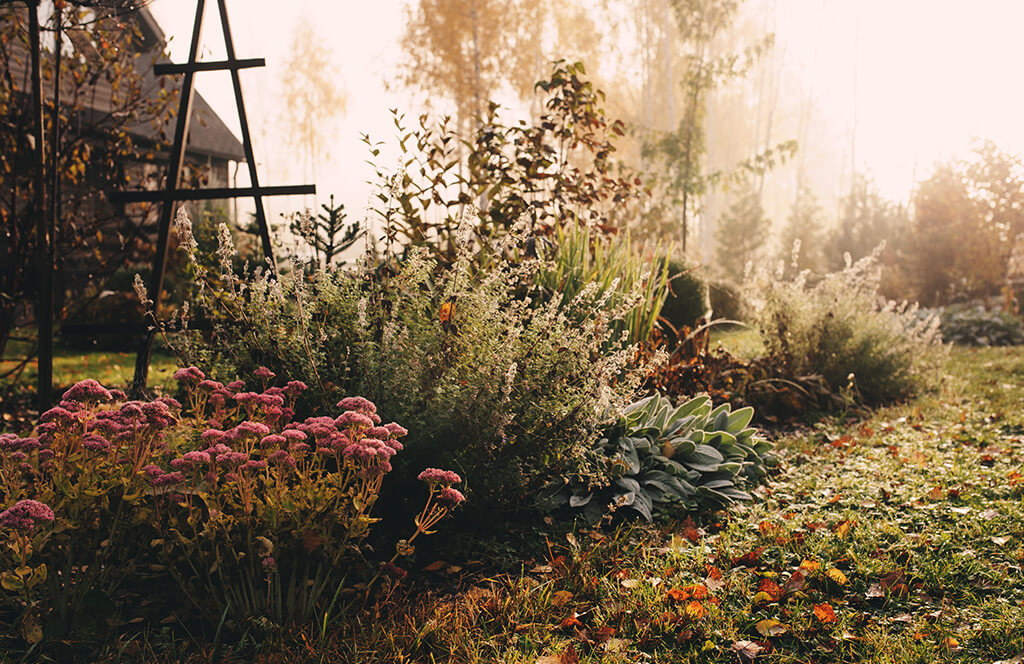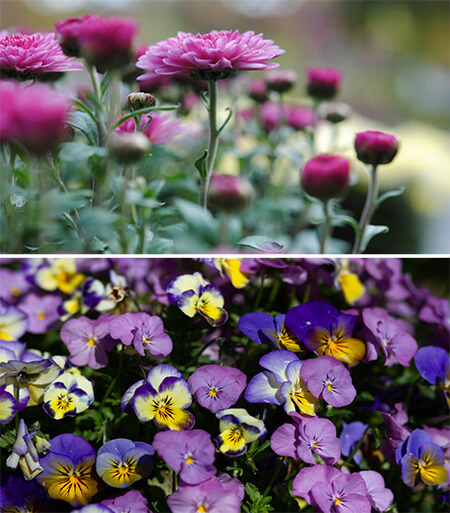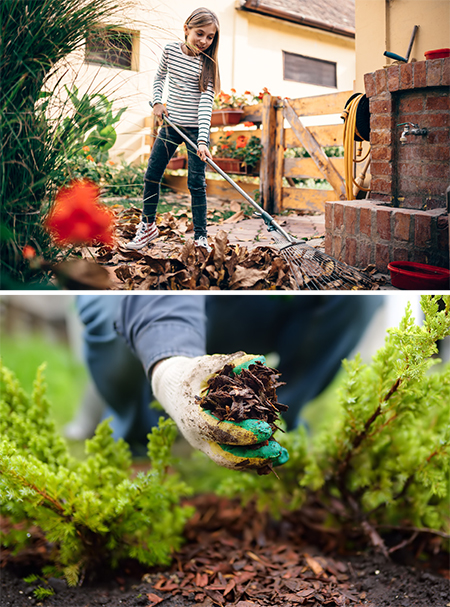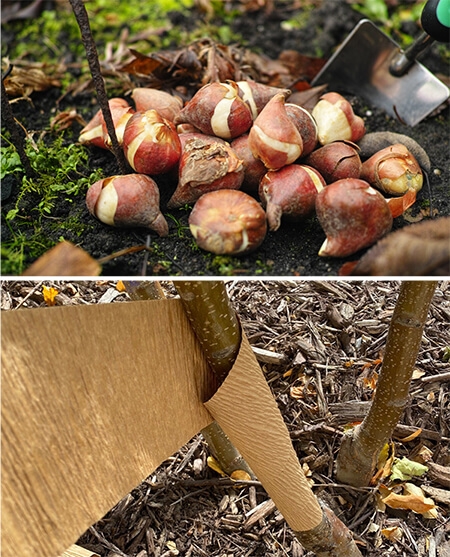Now that autumn is here, it’s time to give your garden that last little push prior to putting it to bed for winter. Whether you’re a die-hard gardener, or your thumb is more of a faded chartreuse, there are plenty of rewarding tasks to do before the snow starts to fly.

adding late season color
One of the easiest ways to squeeze out a few extra weeks of bloom is to plant some late-season flowers. Here are some good choices:
MUMS and ASTERS
Though both are perennials (at least in general terms), it’s simple to treat them like annuals for use in containers and for plugging gaps in gardens and borders. If you do intend to treat them as true perennials in the garden, please note that the 10-inch tall aster you purchase in the fall can morph into an enormous plant the following year. As for the mums, they too can come back far larger than expected, and should also be pinched back once or twice during the following growing season to prevent them from blooming too early or from becoming too leggy.
PANSIES
Low-growing, showy, and a bit whimsical, pansies are available in some of the season’s most bewitching colors, including orange, purple, burgundy, and even black. Indeed, Monet was mad for black pansies and planted great swathes of them in his gardens at Giverny.


garden clean-up do’s and don’ts
Cleaning up your garden at the end of the growing season helps prevent disease and ensures a good head start for the spring. A fall clean-up does not necessarily mean that the garden should resemble a moonscape afterwards. Leave certain perennials and grasses standing that provide visual interest and food for wildlife. Among the perennials to leave standing for their interesting seed heads are RUDBECKIA (black-eyed Susan) and sedums such as AUTUMN JOY. In addition, you should also consider leaving DECORATIVE GRASSES standing. These will turn lovely shades of gold and russet, providing color, movement, and even a musical rustling sound throughout the winter.
Except for the plants described above, you should REMOVE SPENT ANNUALS and CUT DOWN ANY PERENNIALS that look shabby as part of your fall cleanup. Most of these go into the compost pile; however, do not add any plant material to your compost pile (at least if you intend to use the compost) that is diseased.
Fall is also an ideal time to DO ANY NEEDED TRIMMING OR PRUNING, as the branch structure of trees and shrubs is most evident after the leaf fall. Do not, however, trim forsythia or other spring-blooming shrubs at this time (except for damaged or dead branches), as you will be removing the spring blooms. This is also not the right time to shape boxwoods or other dense shrubs in hedges, as this might encourage late-season growth that will only be killed by the coming frosts.
plant trees & shrubs
Fall is a great time to PLANT TREES AND SHRUBS, provided that you do so early enough in the season: Allow six to eight weeks for them to become established prior to the ground freezing.
On this note, one word of caution: Many nurseries offer excellent sales this time of year, but beware of purchasing trees and shrubs after the leaf fall, as it is difficult to judge the specimen’s health without the leaves being present.

on leaves and mulch
After the garden is tidied up, now is an excellent time to ADD A LAYER OF MULCH. It seldom is a bad time to add mulch, as it provides so many benefits. During the winter, mulch helps to insulate roots from the winter’s chill as well as prevent excessive moisture loss from drying winds if the snow cover is lacking.
REMOVE LEAF LITTER FROM GARDEN BEDS unless it is in a very naturalized, woodland garden setting. Fallen leaves do make a great mulch, provided they are shredded first. If whole leaves are left to rot where they fall, they form dense, damp mats that do not readily break down and play host to molds, fungus, and slugs.

other points to consider
It goes without saying that fall is the time to PLANT SPRING-FLOWERING BULBS. Of the many types of bulbs available, you may wish to avoid tulips, as they tend to poop-out after a few years and everything from voles and squirrels to deer find both their blooms and bulbs delectable. Instead, plant loads of DAFFODILS and ALLIUMS (decorative onions). These are untroubled by pests and put on a reliably smashing show each spring.
Autumn is also a good time to cover the trunks of young trees with one of the many commercially available types of TREE WRAP. This process protects trees from developing splits or cracks in their bark caused by rapid temperature fluctuations.
Finally, fall is a great time to begin planning for next season. No doubt, you are all looking forward to curling up in front of the fire with a cup of hot cocoa and a few good gardening books, magazines, and seed catalogues. NOW GO OUT AND PLANT SOMETHING—WHILE YOU STILL CAN.

